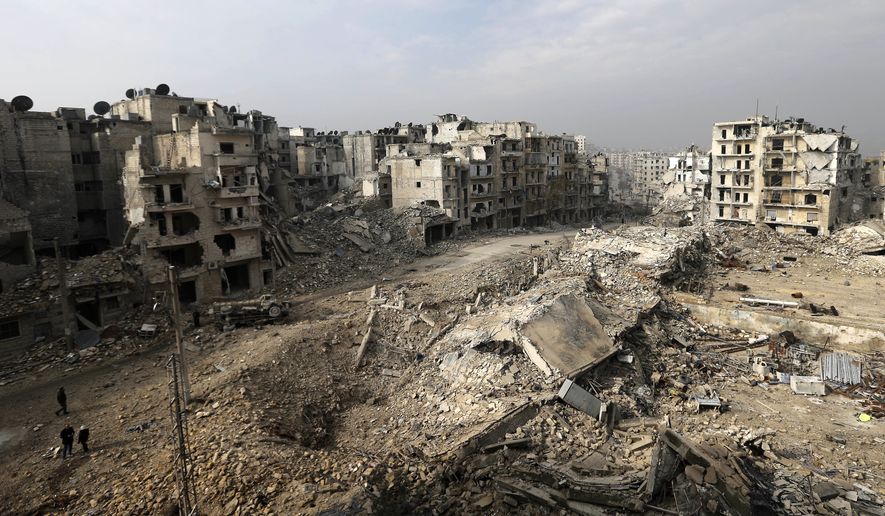President Trump is expected to order the Pentagon and State Department to develop a series of “safe zones” in Syria, a move that administration critics claims could draw the U.S. military deeper into the country’s civil war.
The safe-zone mandate was tucked into the text of a draft executive order by Mr. Trump obtained by several news outlets* that establishes curbs on the flow of refugees from Iraq, Syria, Libya, Yemen and other conflict zones from migrating to the United States. The order also institutes a revamped screening process for all U.S. immigrants.
Defense Secretary James N. Mattis and Rex Tillerson, Mr. Trump’s pick to be secretary of state, would have 90 days to submit a blueprint to the White House on the establishment of “safe areas in Syria and in the surrounding region in which Syrian nationals displaced from their homeland can await firm settlement,” according to a copy of the draft order, obtained by The Huffington Post.
As president, Barack Obama resisted calls for the safe zones along the borders of Syria, designed to be a protective shield for Syrian refugees fleeing the violence, for fear that the U.S. would be forced to defend the zones in a war in which Syrian rebels, Islamic State militants, Kurdish militias and soldiers from Iran, Lebanon, Russia, Turkey and Iraq are all involved.
Supporters said the zones were a humanitarian imperative in a war that has killed hundreds of thousands and could serve to contain the throng of refugees who have flooded Jordan, Turkey, Greece and much of Western Europe as the conflict has ground on.
On the campaign trail, Mr. Trump backed safe zones, as did his Democratic rival, Hillary Clinton.
“It’s so sad, and we’re going to help people,” Mr. Trump said during a December rally in Hershey, Pennsylvania. “We’ll build and help build safe zones in Syria, so people will have a chance.”
But questions over oversight and enforcement of the safe zones have raised concerns among national security officials and private analysts, who argue that such a commitment would tie down American and allied forces in the country indefinitely.
“Right now, for us to control all of the airspace in Syria, it would require us to go to war against Syria and Russia, [and] that’s a pretty fundamental decision that certainly I’m not going make,” Gen. Joseph F. Dunford, chairman of the Joint Chiefs of Staff, told Congress in September.
Calls for Syrian safe zones in Washington and in the international community grew amid the devastating Russian aerial campaign against rebel-held sections in the city of Aleppo.
That campaign, during which Russian aircraft used dumb bombs and cluster munitions — which have been banned under the international rules of war — helped break the back of the Syrian rebel resistance in east Aleppo, resulting in the city coming under regime control in December for the first time in four years.
The idea for a safe zone has been revived as Turkey, Russia and Iran are attempting to impose the latest cease-fire in the Syrian conflict. The rebel groups battling Syrian President Bashar Assad have been plagued by infighting in recent days, with mainstream rebel groups battling an al Qaeda-linked faction.
*Correction: The original story incorrectly stated that the executive order had already been signed. The safe zones provision is in a draft order that has not yet been officially issued by the president.
• Carlo Muñoz can be reached at cmunoz@washingtontimes.com.




Please read our comment policy before commenting.